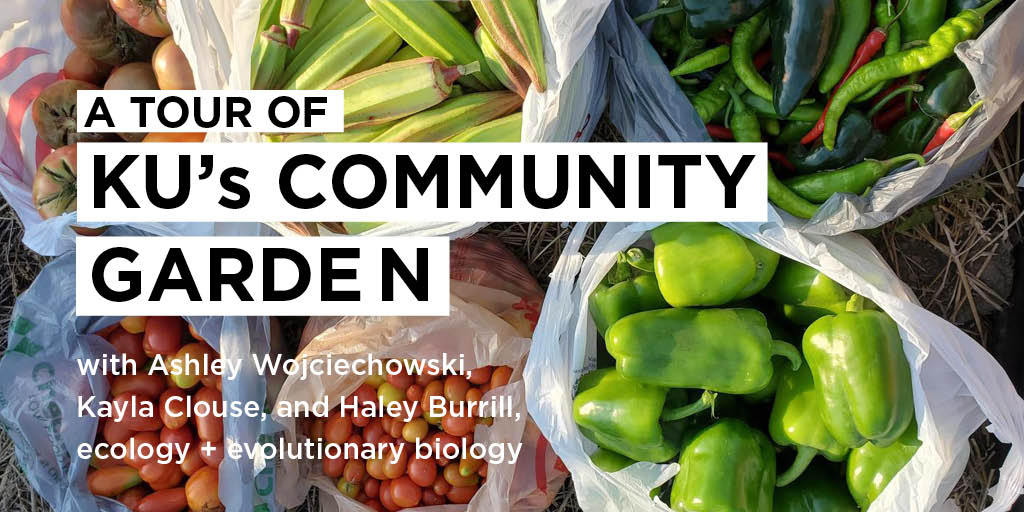
Long before COVID reared its ugly head, many Lawrence and KU community members were struggling to access nutritious food on a regular basis. As the health and economic crises ignited by the pandemic accelerated, so too did the already rampant problem of food insecurity.
On a 10,000-square-foot plot of land on the grounds of the Native Medicinal Plant Research Garden, Jayhawks are teaming up to fight hunger in Lawrence by engaging the KU community in civic agriculture. Since 2010, KU’s Community Garden has provided a space for students, staff and alumni from diverse backgrounds and departments to work toward a common goal — educating others about locally-sourced food through hands-on learning. And their collective efforts in the outdoors have yielded impressive results; in fall 2020, the group donated an average of 40 pounds of produce per week — and approximately 800 pounds for the entire year.
To learn more, we talked with Ashley Wojciechowski, Kayla Clouse and Haley Burrill, all graduate students in KU’s Ecology & Evolutionary Biology Department. They filled us in on the Garden’s recent impact, their partnerships with local organizations in the past year, and how they hope to inspire community engagement in local food systems.
Tell us about the KU Community Garden. What is its mission?

Wojciechowski: The KU Community Garden is a place where members can come together to grow local fruits and veggies for themselves and the community. This plot of land is roughly 10,000-square-foot and was provided for the use of the Community Garden by the KU Native Medicinal Plant Research Program through the Kansas Biological Survey. We offer individual plots for members to garden and designated plots for donations.
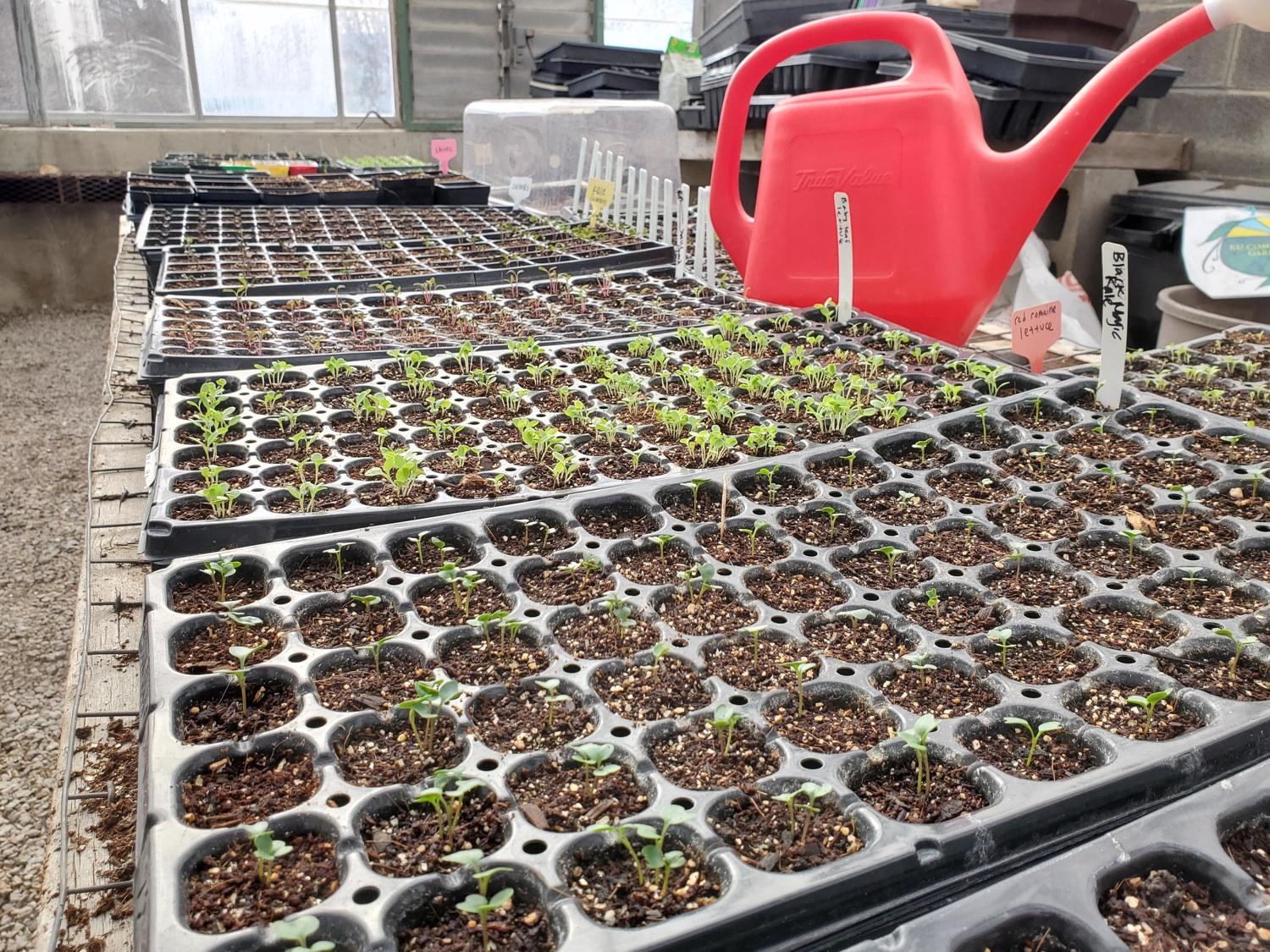
Our mission is to provide the KU community the space and opportunity to learn about, experience and experiment with growing their own food and engaging in civic agriculture. We hope to inspire the KU community to support local food systems and encourage them to develop an appreciation of where their food is sourced. We have recently dedicated ourselves to community partners like Just Food to share our produce with those in need to provide nutritious, healthy foods for food-insecure families in the greater Lawrence area.
Our members are from diverse backgrounds and departments within KU, but our donation area is co-managed by Ecology and Evolutionary Biology graduate students including myself, Kayla Clouse and Haley Burrill. Any KU student, staff or alumni is welcome to join our Garden!
What different roles do members play in terms of duties?
Clouse: Each one of our garden leaders is instrumental in the management of the community garden. Whether it’s running our social media accounts, managing finances, organizing community workdays, or making garden management decisions, we all have something to offer.
What is most rewarding about working in the Community Garden? What’s been most challenging?
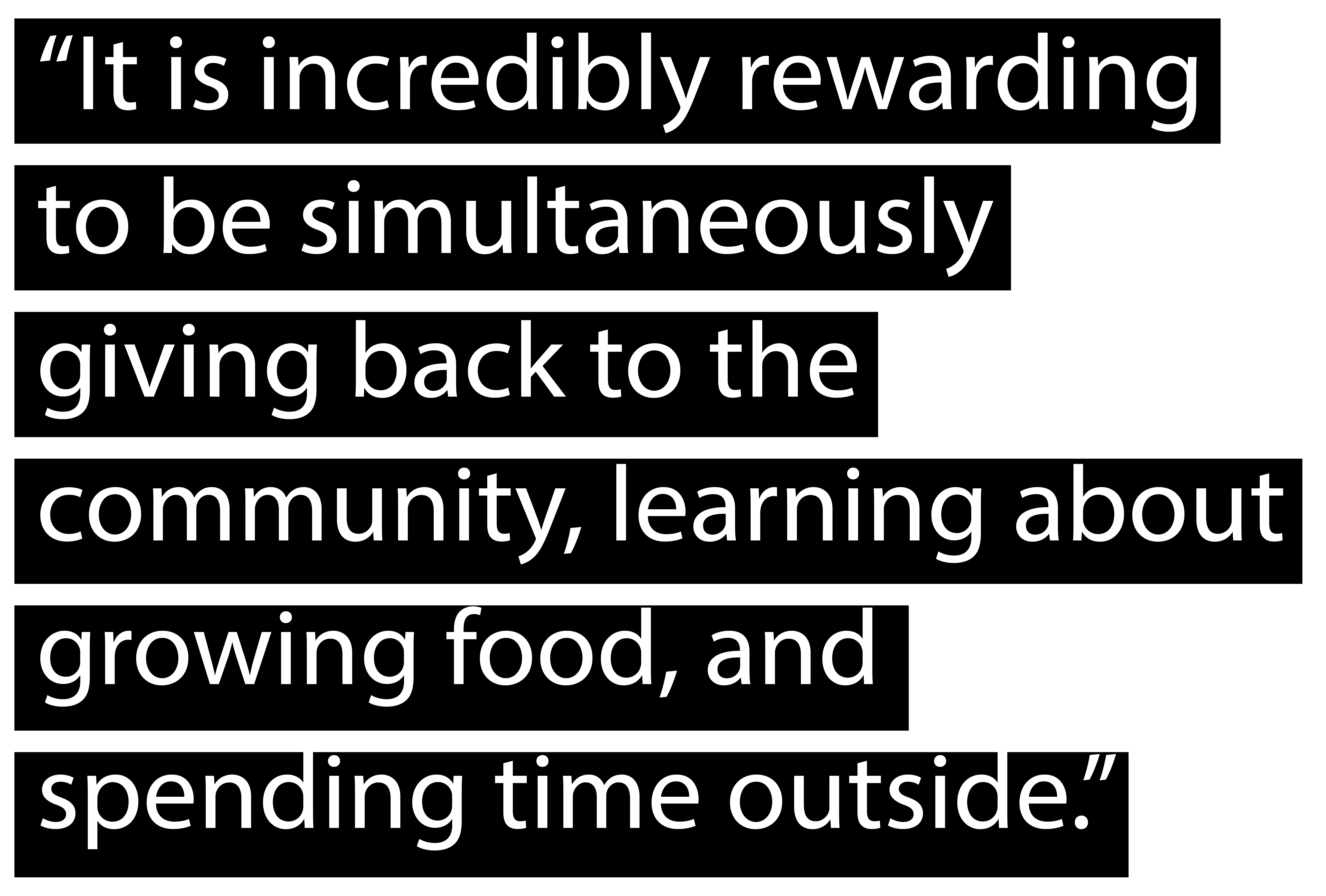
Wojciechowski: While we have sufficient tools and seeds for planting, we lacked the infrastructure to grow this produce efficiently. We were fortunate to receive a $1100 grant from the KU Student Environmental Advisory Board (SEAB) that provided us funds to construct fifteen new raised beds that would be designated for growing donated produce. Harvesting our local, fresh veggies every week makes all the effort put into preparing for the season all worth it! Every week there is a new challenge and greater reward!
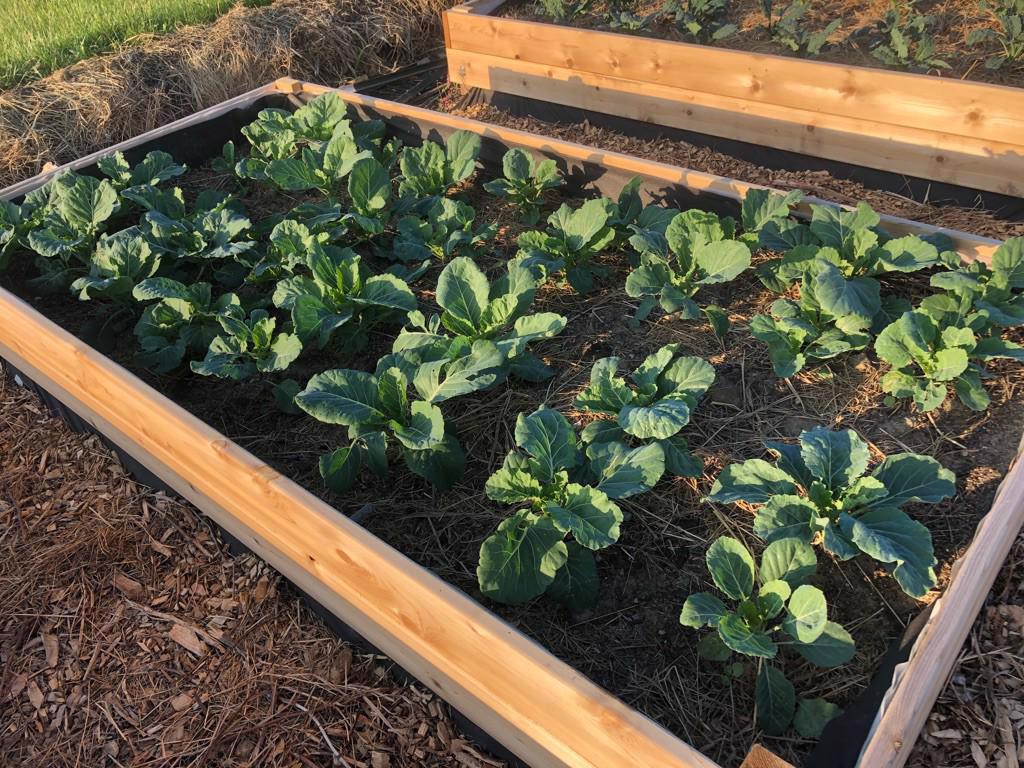
Burrill: I didn’t quite realize the impact of our gardening space until the first time I dropped off a harvest at Just Food. It is incredibly rewarding to be simultaneously giving back to the community, learning about growing food, and spending time outside. There’s also nothing like ending a workday with my hands covered in soil, having made critter friends (insects, frogs, snakes) along the way. The most challenging thing has been adapting to the nuances of Covid-19. We had to quickly shift our strategies on how to maintain all the plants we ambitiously planted in the spring, with the health of our garden members (and community!) close in mind. Overall, the reward has been well worth the challenge and we have prevailed with a highly productive season.
What are some recent achievements or milestones the Community Garden has celebrated?
Clouse: Just the last week, the KU Community Garden donated our largest ever haul to Just Foods – over 120 pounds of fresh okra, peppers, and tomatoes! This donation pushed us over the 700 pound total food donated mark and helped us achieve 350% return on investment for our KU SEAB grant.
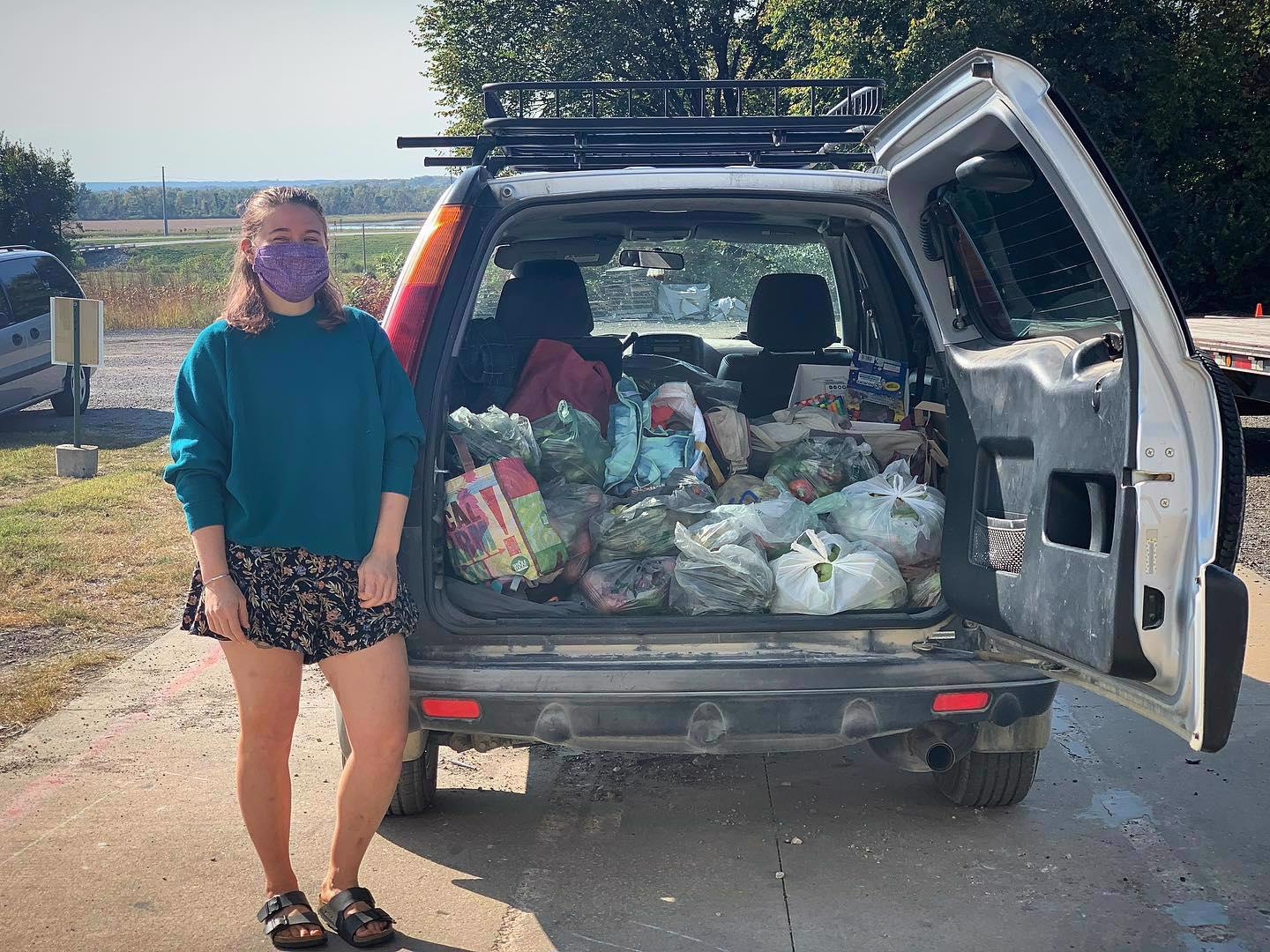
Wojciechowski: We have been averaging about 40 pounds of donated produce a week, so we estimate that we will donate over 800 pounds of produce this year!
What is one thing you think everyone should know about community gardening and growing food locally?
Burrill: It requires upkeep but otherwise is not very difficult! Just an hour or two a week is usually all that is necessary to keep your plants producing. It’s also helpful to have some prior knowledge of pests you may encounter on whatever crops you plant. Thankfully our team has lots of resources on these pests — whether it be insect or fungal — as well as sustainable approaches to getting rid of them.
What advice would you give students who want to get involved in organizations or causes at KU and in their communities?

Burrill: Look into what organizations exist via Rock Chalk Central! If you have an idea that isn’t being explored, find some people who are into it and start it up yourself! KU has plenty of resources to offer those ambitious students with a mission. You might surprise yourself with what you can accomplish!
Give a shout-out to a professor, mentor, advisor, or someone at KU who has helped you.
Clouse: None of this work would have been possible without the guidance of our faculty advisor, Shannon Criss, who is a professor in the School of Architecture and Design at KU. Shannon was instrumental in the construction of the raised beds and has shared her love and knowledge of gardening with community garden members.
What motivates you?
Burrill: The joy of being outside, surrounded by organisms that have so much to teach us, has brought me to the path I’m on and where I study now. What motivates me most is advocating for these organisms. How can we protect and serve them if we do not understand what they need to thrive and survive in this place we (humans) are so rapidly changing? With every study we unveil a need or a mechanism for livelihood, and science acts as the universal language between us and other organisms.



Meet more of our students. For more information, explore the Department of Ecology & Evolutionary Biology and the Community Garden at the University of Kansas.